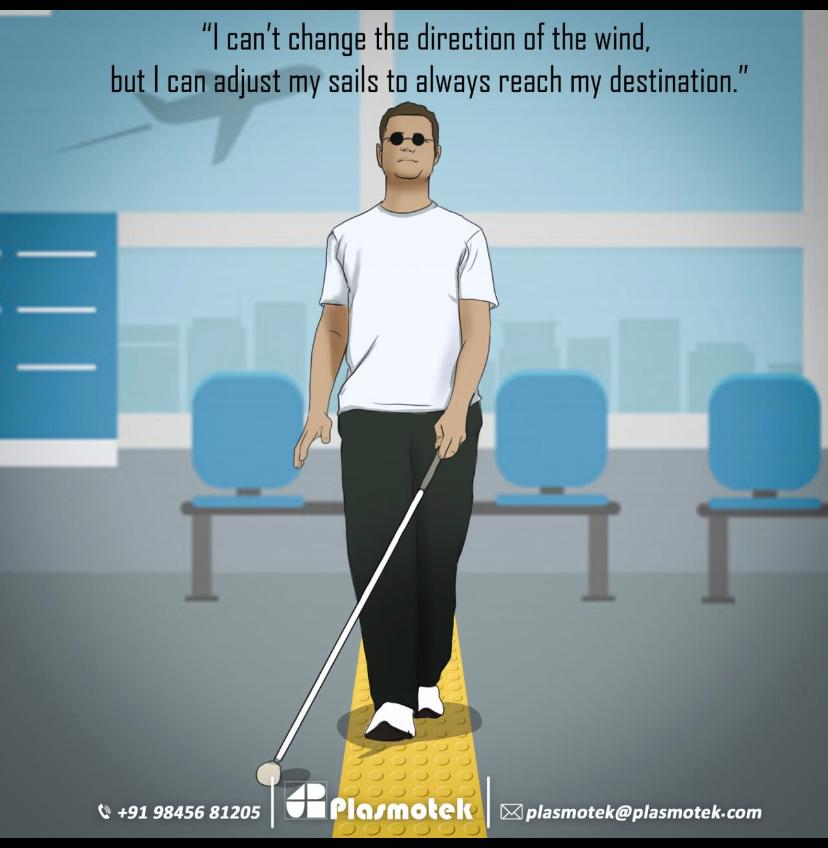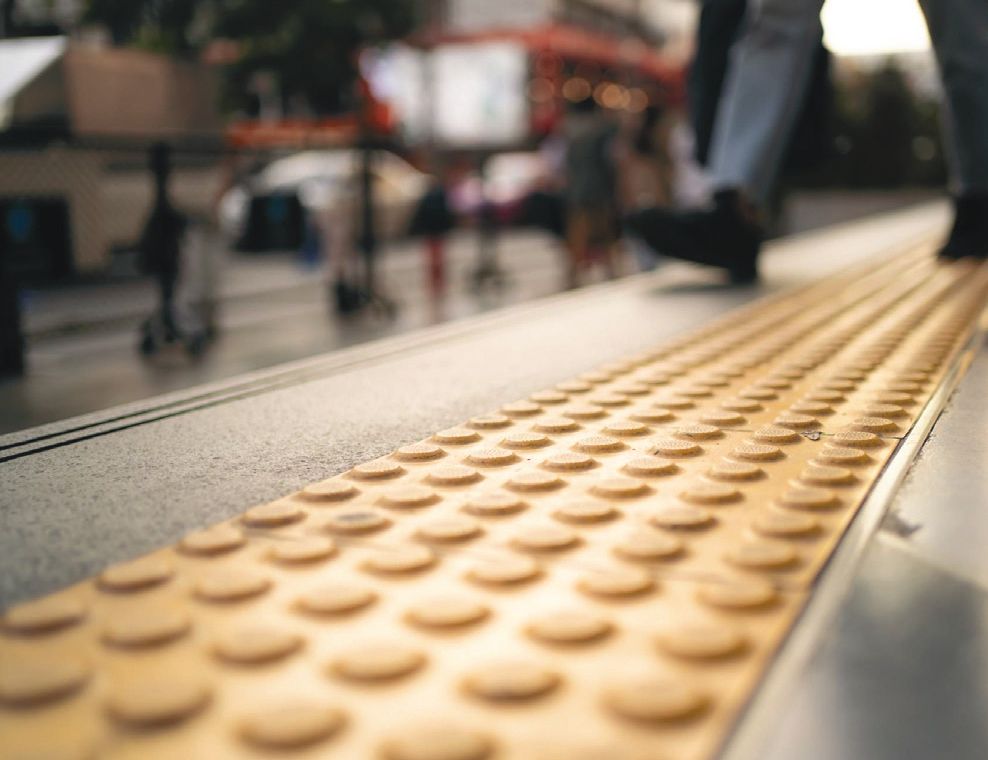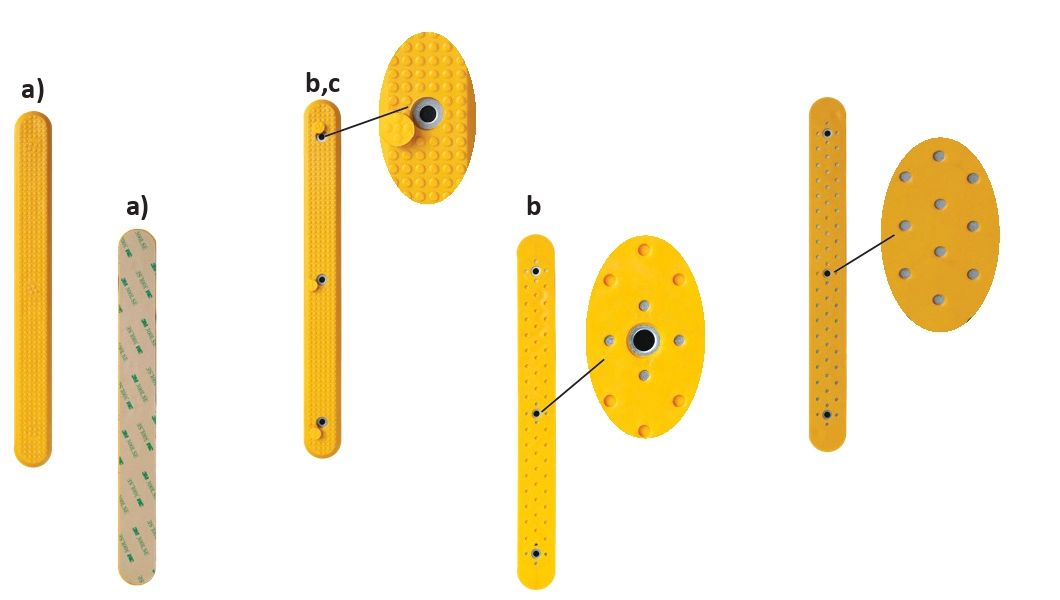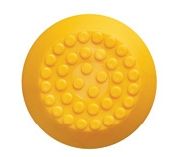

Navigating public places like busy city streets, railway stations etc. can be chaotic for any pedestrian these days due to heavy traffic and overzealous drivers. But for people with visual impairments, you can imagine, this can be exponentially more difficult and dangerous. Thankfully, a man named Seiichi Miyake created an invaluable tool that has helped make things a whole lot safer for such people, through the decades.
Inspired by a close friend who was slowly going blind, Miyake, a Japanese inventor, invested his own money into an innovation originally known as Tenji blocks. Now more commonly referred to as tactile blocks/domes, the bright bumpy surfaces are like braille on pavement. They are intended to alert visually impaired pedestrians of upcoming dangers, like sidewalk curbs, train platform edges or junctions in walkways.
While those with severe sight loss aren't able to perceive the bumps' signature colors, they are able to detect the texture with their shoes or by using a long cane or with the help of a guide dog.
While you may be familiar with the common surfaces, you may not have probably noted that there are two different types of textures to Tenji blocks: dots and bars. The dotted blocks are the ones intended to inform those with visual impairments about upcoming hazards like crosswalks. But the bars are something different - they are meant to give directional cues so that people know they are on a safe path.
Tactiles for outdoor usage are generally made of ceramic. For indoor usage in railway platforms, malls, public and private offices etc. tactiles made of Polyurethane are the ideal choice. These tactiles have the advantage of a very high life span and resistance to color fading.
Polyurethane tactiles can be fixed on various substrates, including:
Concrete: such as footpaths, staircases and pedestrian crossings. Asphalt: such as roads and driveways.
Pavers: stone surfaces such as paving stones, tiles, or natural stones like granite, marble.
Metal: can be fixed onto metal surfaces like steel or aluminum commonly used in railway stations, airports and other transportation facilities.
Wood: such as decks, ramps and bridges.
Fiberglass: boat decks, pool decks, water parks etc.
Carpets: These can also be fixed on Carpet/Carpet Tiles.
DUROTACT TACTILES:
Tactile Tiles with Directions Pattern Self-Adhesive:
These are available as square tiles of size 300 x 300 mm, double sided stickers covering the whole base or double-sided adhesive tapes on edges and center, for easy peel and fix installation.
Tactile Tile with Warning Studs Self-Adhesive:
These hazard warning tactiles have 36 studs on top surface and dimension of 300 x 300 mm with similar double-sided stickers on the bottom surface as mentioned above.

Polyurethane Tactile Strips & Studs:
Tactile Directional Strips Self-Adhesive:
a) These are available as long strips of size 30 x 300mm, have a textured top and curved ends. Installation is done as multiple linear clusters of 4 Nos. Each cluster of 4 strips cover a 300 x 300mm area. Each strip is fixed with self-adhesive 3M tapes on the bottom side.
Tactile Directional Strip Screw-Fix types:
b) With Screw holes strengthened by embedded GI Washers These are similar to above, but fixed to the ground through screws driven through three screw holes one each at the ends and one in the middle. The screw holes are strengthened by a GI washer molded into the body surrounding the screw hole. The screw holes are rendered invisible by closing it with matching screw caps after installation.
c) With End to End Embedded GI Strip:
These strips are also fixed to the ground by three screws however the strip is further strengthened by an end to end GI plate molded into it. Screw holes are rendered invisible by closing it with matching screw caps after installation.

Tactile Tile with Warning Studs Self-Adhesive:
These hazard warning tactiles have 36 studs on top surface and dimension of 300 x 300 mm with similar double-sided stickers on the bottom surface as mentioned above. Tactile Warning Studs Self-Adhesive These studs have a textured top and are installed in square formation of 36 studs of diameter 35 mm. One such cluster would cover an area of 300 x 300 mm.

